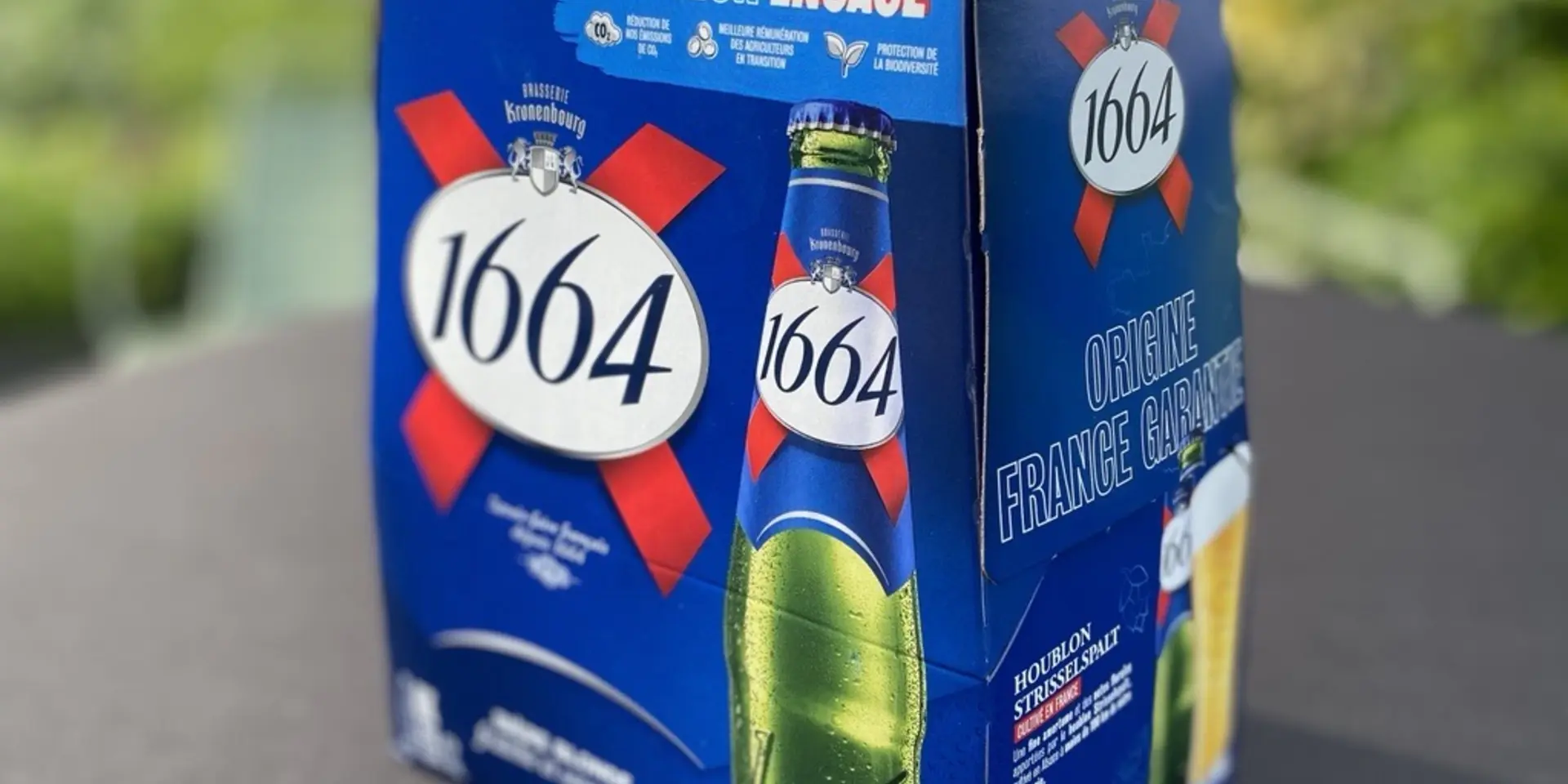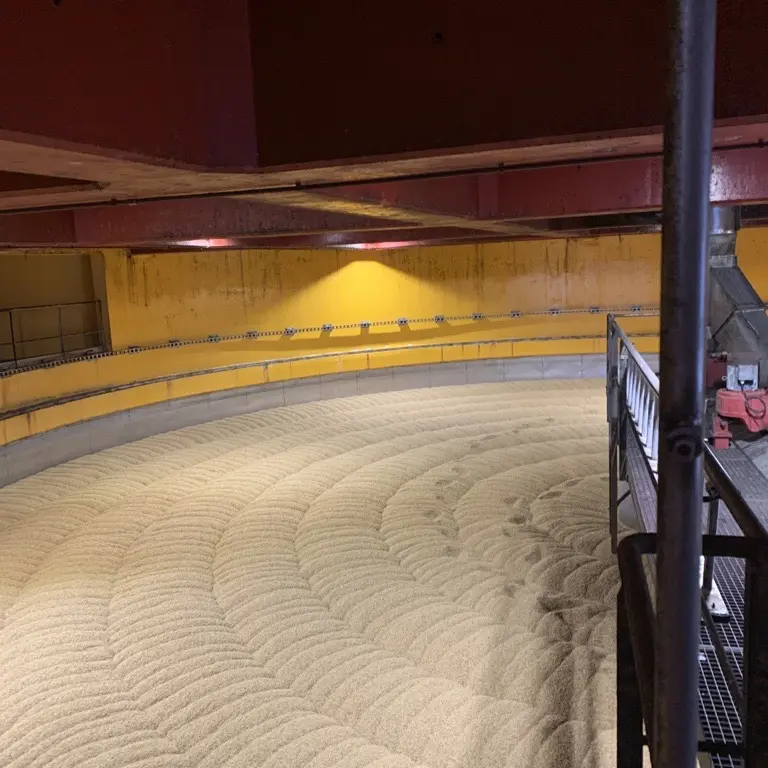More than 44,000 consumers have already scanned the QR code for 1664 Blonde
- Innovation
- Malting

After just 3 months in existence, more than 44,000 consumers have already scanned the QR code on 1664 Blonde and discovered its journey from the barley field to the bottle!
For the past 4 months, thanks to a QR code placed on the bottle, 1664 Blonde beer has been inviting consumers to discover how it is made, from the barley field to the bottle, via a brand new digital platform.
Since its launch, it's been a huge success, with over 44,000 consumers already logged on!
Consumers are particularly keen to find out more about the ingredients in their beer, and are paying close attention to the commitment of all those involved in this 1st traced Responsible Barley chain, co-constructed with Soufflet Agriculture & Malteries Soufflet (InVivo group) and Kronenbourg SAS.
THE NUMBER OF CONSUMERS DOUBLES EVERY MONTH, WITH AN AVERAGE CONSULTATION TIME OF 3 MINUTES
Launched in February, the number of visitors to the platform has doubled every month to reach a cumulative total of over 44,000. The average consultation time is 3 minutes.
The top 3 sections that attract the most interest from consumers:
- Commitments: this approach reflects the partners' commitment to responsible barley growing, water conservation and sustainable transport, with almost 70% of Kronenbourg SAS beers shipped by train from the Obernai brewery, which means 19,000 fewer lorries on French roads every year.
- Cereal harvesting: no other beer on the market has taken its commitment to the agricultural and food transition so far, with such transparency. An exclusive blockchain solution has been developed by Malteries Soufflet (InVivo group) in partnership with Crystalchain. Consumers can now access information about the area where the barley was harvested and its harvest date. They can also access an interactive map.
- Brewing: not only do consumers discover the various stages in the brewing process, they can also find out precise details about the beer they are holding in their hands, such as the brewing and malting dates and the day it is bottled. All this is accompanied by video testimonials from Master Brewers on their know-how and the creation of new recipes.
IN 2023, A SURFACE AREA MULTIPLIED BY 3 AND A NUMBER OF FARMERS MORE THAN DOUBLED
The number of partner farmers involved in the 1st Responsible Barley Chain in France has more than doubled in the space of a year. There were 45 in 2022 (in the Grand Est and Burgundy regions), when the scheme was launched, and there are now 120 farmers under Responsible contract (in the Grand Est, Burgundy and Ile de France regions). They supply their barley to Soufflet Agriculture, then the Soufflet Malting Plant in Strasbourg is responsible for transforming the barley into malt, which is then delivered to the Kronenbourg brewery in Obernai. The aim is to have 250 farmers by 2026.
The area under Responsible Barley has also tripled in one year, from 900 ha to 2,700 ha today (with an average farm size of 190 ha). In terms of tonnage, in 2022, this represented 5,000 tonnes of graded barley, and today the forecast harvest in 2023 is 14,000 tonnes of graded barley.
THE ALREADY VISIBLE IMPACT OF THE AGRO-ECOLOGICAL TRANSITION
When the 1st traced Responsible Barley chain was set up, Soufflet Agriculture, Malteries Soufflet and Kronenbourg SAS worked together to draw up specifications guaranteeing transitional agriculture through the implementation of good agroecological practices by farmers. While ensuring the high quality of the malt, it also helps to protect the environment, in particular by promoting biodiversity and reducing the carbon footprint.
Increasing biodiversity
- Nearly 6 different crops per farm: half the farmers grow 4 or 5 different crops on their farm, the other half between 6 and 8 crops. Building longer crop rotations brings many benefits, particularly in terms of soil health and biodiversity. It also makes it possible to rationalise the use of plant protection products, thanks to the introduction of crops that consume fewer inputs and the introduction of variability that disrupts bio-aggressors, for example.
- 2 times more Ecological Interest Areas (EIA) than the threshold set by the CAP: farms with Responsible Barley contracts have almost 9% of Ecological Interest Areas, with fallow land, grass strips, copses, as well as kilometres of hedgerows (for the Responsible Barley sector, there are already more than 16 km of hedgerows in total!) with multiple environmental benefits.
- 169 beehives and 77 perches already in place: farmers are also the driving force behind the introduction of systems that encourage natural predation. To date, 25 nesting boxes and 77 perches have already been installed. And let's not forget the measures to help bees. In fact, 169 beehives are already in place, as well as 17 hectares of melliferous fallow land - that's more than 24 rugby stadiums!
A carbon footprint 20% smaller than conventional method
An initial assessment shows that the carbon footprint of barley grown using traced responsible agriculture is already significantly lower than that of barley grown using conventional methods: emissions for the 2022 harvest measured(1) are 334 KgCO2/T of barley compared with 409 for the conventional method(2). Various levers are being used to achieve this good performance:
- Reasoned fertilisation based on the principle of the right dose at the right time, split fertiliser applications based on annual soil analyses and the planting of legumes, which can be integrated into the crop rotation.
- The use of multi-species plant cover sown between crops to encourage carbon capture and biomass production.
Certification by OCACIA
The good agricultural and environmental practices implemented in this traced Responsible Barley chain are subject to external and independent control (NF V30-001 standard). In addition, a level 2 environmental certification system, based on the charter of good agricultural practices, has been set up for this sector.
50% TRACED RESPONSIBLE BARLEY IN 1664 BLOND FROM 2024
Co-constructed with Soufflet Agriculture and Malteries Soufflet (InVivo group), this innovative sector was launched in 2022. As of mid-2023, the cultivation of Traced Responsible Barley is progressing steadily, making it possible to meet the targets to which Kronenbourg SAS has committed itself, i.e. to go from 20% traced barley in 2023 to 50% in 2024 and then 100% in 2026 to brew 1664 Blonde.
Source :
(1) Measurement carried out using the Arvalis eGES tool / Label Bas Carbone Grandes Cultures.
(2) Agribalyse, the benchmark environmental database for agricultural and food products
